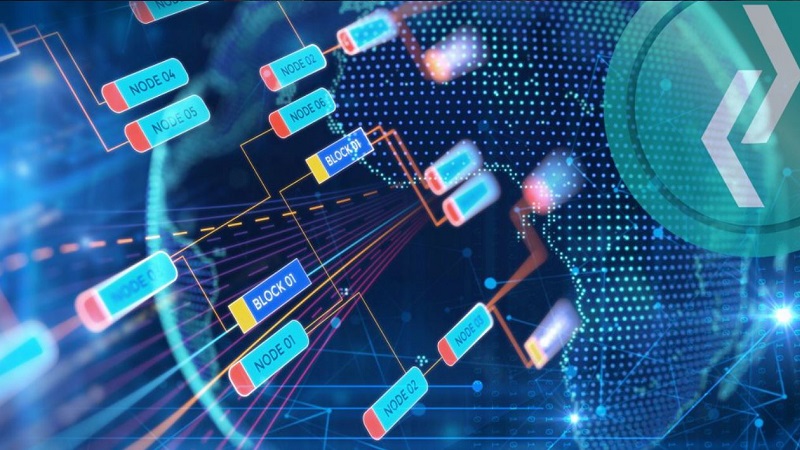The SDFS network will provide decentralized applications with a secure, point-to-point, micro-network-based data layer that allows the exchange of data between instances of an application across a decentralized network. The micro-networks allow data and digital assets securely sent to other application instances. And will automatically shred and encrypt the assets using Topia Technology world-class encryption technology. This ensures that the data is available only to the application instances for which it intended.

The SDFS network acts as a “support network” for individual micro-networks, providing blockchain hosting and data replication services. Since blockchains require an active node running to maintain continuity of the chain, the support network hosts micro-network blockchains on high-availability systems. These systems provide reliable blockchain hosting while maintaining the security of the micro-network’s encrypted content.
The SDFS network adopts techniques from the peer-to-peer and blockchain worlds to create a system. System to transfer digital assets securely between application instances while eliminating the need for a centralized server. By combining blockchain protocols, peer-to-peer data transfers, and the data security technology of Secratai, developers can easily and securely transfer digital assets between users of their decentralized applications. The blockchain provides a cryptographically secure log of all data transfers and ensures that only authorized users can access the assets being sent across the network.
The SDFS data layer will allow applications to:
1. Establish containers for digital assets
2. Invite other application instances/users to access the container.
This way, decentralized applications can securely exchange data between instances and retain their ability to interact with public blockchains to accomplish their primary function.

Addressing Performance of Large Blockchains
Public blockchains may hampered by their sheer size; bootstrapping a new node onto a public blockchain may require the transfer of tens or hundreds of Gigabytes of data. For example, the Bitcoin blockchain is currently over 170 GBii, requiring hours or days to synchronize a new node. SDFS addresses this issue by allowing the developer to run outside the public blockchain in most cases. These much smaller chains allow faster operation.
Secure Collaboration Application
To demonstrate the SDFS network and its capabilities, Topia Technology will use the data layer libraries and SDFS network to develop a Secure Collaboration suite. This suite will allow users to create secure collaboration spaces via SDFS containers. Files and digital assets uploaded to these collaboration spaces will shred and encrypt to ensure security. When invited to the collaboration space, other users may view and modify existing assets or add new ones. Users can send secure messages to each other in the collaboration space, which allows them to coordinate on projects.
The Secure Collaboration suite will provide users with an intuitive UI that includes a list of all of the collaboration spaces where they are members. Each collaboration space will show all files and digital assets contained therein, along with any messages left by members. The application will include address books and auto-discovery that allow members to invite new users using email addresses.
Topia Technology plans to develop clients for Windows desktops, iOS mobile devices, and Android devices. All software versions will include full SDFS network capabilities and ensure full end-to-end encryption. SDFS Use Cases The SDFS network enables the development of applications that allow users to work together securely. Selected application use cases described below.

SDFS Secure Messaging Application
A company requiring secure communication between employees can create a Secure Messaging application on top of the SDFS network. Initiating a secure communication with another user would automatically create a secure container. Messages between users would be encrypted and the action stored in the container blockchain. Files attached to messages would automatically and securely upload to the container using SDFS’s secure digital asset-sharing capability and then recorded in the container blockchain. Also the application could allow file editing of using SDFS to do a secure and encrypted download of the asset to a software editing program, with the result being encrypted and uploaded back to the container.
Lawyers, CPAs, and other Professional Services Providers
Lawyers, CPAs, and other professional service providers need to be able to exchange confidential documents with their clients. Also, an application created using the SDFS network and API to allow such exchanges. Using an SDFS-based application, they could track the documents they shared with their clients, ensure that they were delivered securely, receive sensitive documents from their clients, and securely communicate without fear of
eavesdropping or disclosure of sensitive digital assets. SDFS would handle the creation of a container for the digital asset, as well as the secure transfer and messaging between Service Provider and client. A payment system added to the SDFS-based application, with the container blockchain recording the transaction.
Delivery of Digital Assets for Online Sales
A company that needs to securely process the sale and delivery of digital assets. Such as movies, music, or electronic tickets and it could use the SDFS network and data layer libraries to streamline the delivery process. Using the SDFS network, the company would be able to securely deliver both the purchased digital assets and a
sales receipt. Also SDFS ensures the security of the delivered assets, preventing theft or loss, creating an immutable log of the delivery process. The company’s application would, upon completion of a sale, create a container for delivery of the purchased assets. It would then place copies of the purchased assets, along with the purchase receipt, into the container.

These actions, along with the invitation of the purchaser to the container, would be recorded in the container’s blockchain. When the purchaser accesses the container to retrieve their purchased assets, the blockchain would be updated to record their acceptance of the digital assets, providing a record to the company of the successful delivery. Once the transaction is complete, the company’s application could keep the container. Also its contents for as long as needed, discarding it after an appropriate period of time.
SDFS Differentiators
The market for blockchain-based decentralized file storage applications is largely served by-products like FileCoin, StorJ, and MaidSafe. Each of these products focuses on allowing a user to store and access their
content. None of these products focuses on the problem of securely sharing information and digital assets. SDFS focuses on this important aspect. Also SDFS addresses the need for sharing digital assets by providing a secure
data layer to reliably and securely transfer data and digital assets between application instances.
In conclusion, the SDFS network provides a secure data layer that allows applications to distribute digital assets to other instances in a manner that maintains asset integrity and security. Using the support network, these secure micro-networks can provide high-availability of both blockchains and digital assets even when individual users are not online. As part of its data transfer capabilities, the SDFS data layer can distribute digital assets to other members as well as provide secure replication and high availability through the support network.
To meet rigorous security requirements, SDFS uses Topia Technology hardened security methods to shred and encrypt digital assets before they stored on the decentralized network. This protects digital assets and ensures that only authorized users can access the necessary decryption keys.




